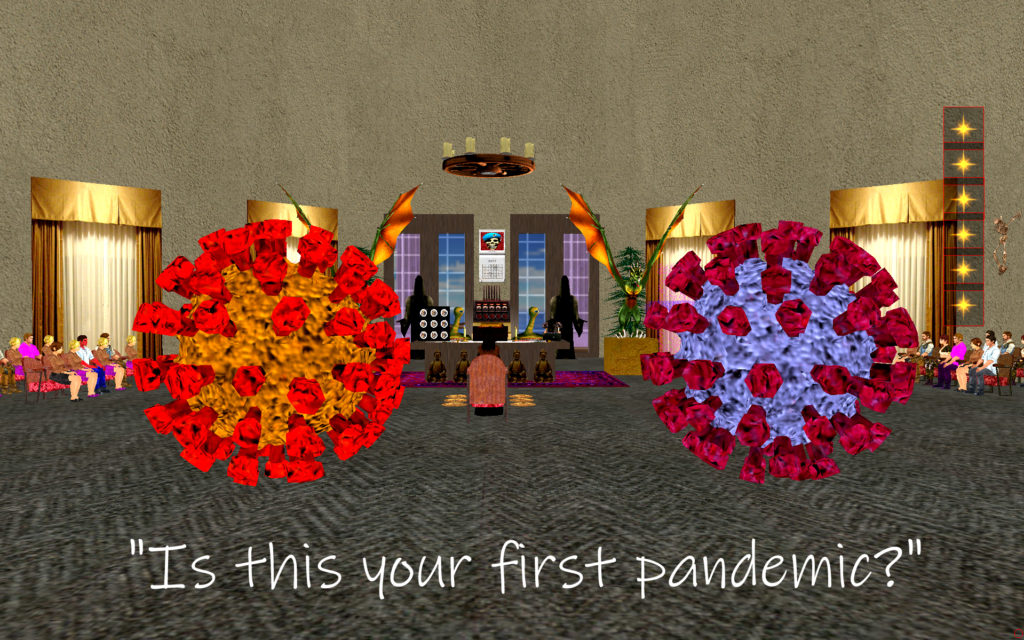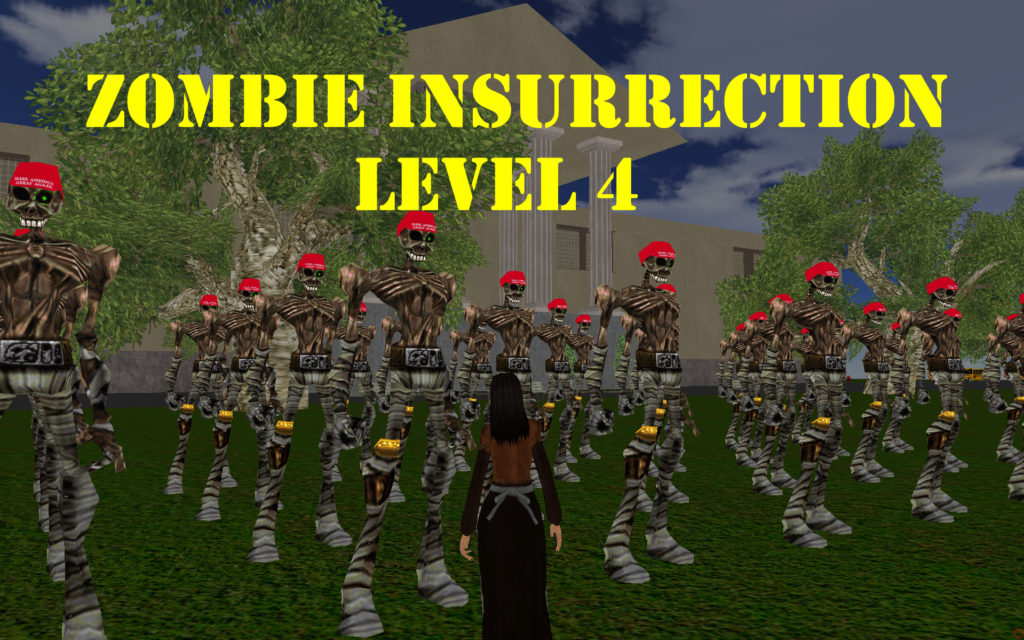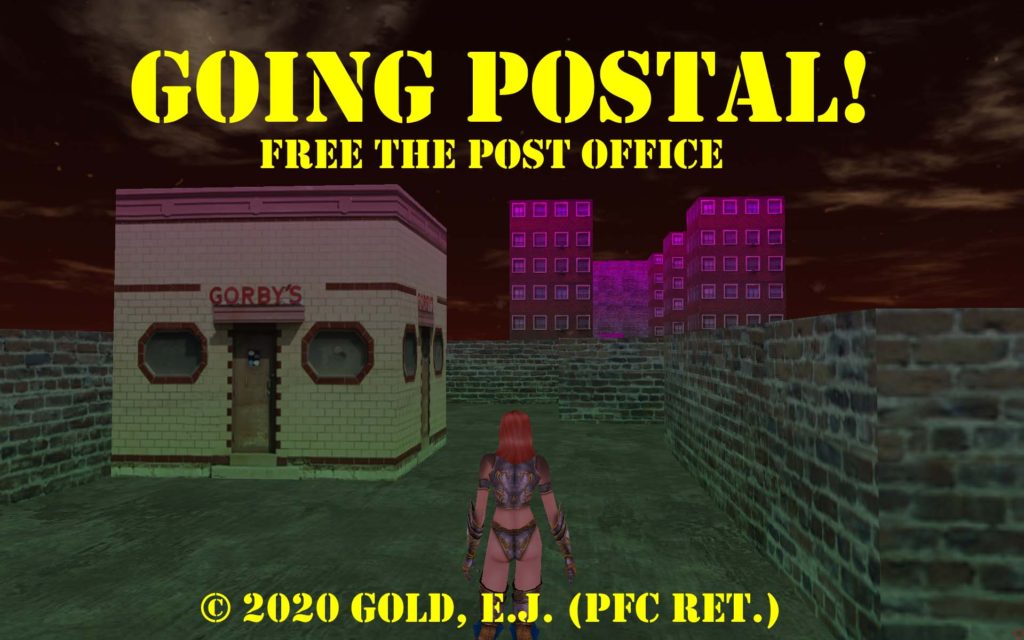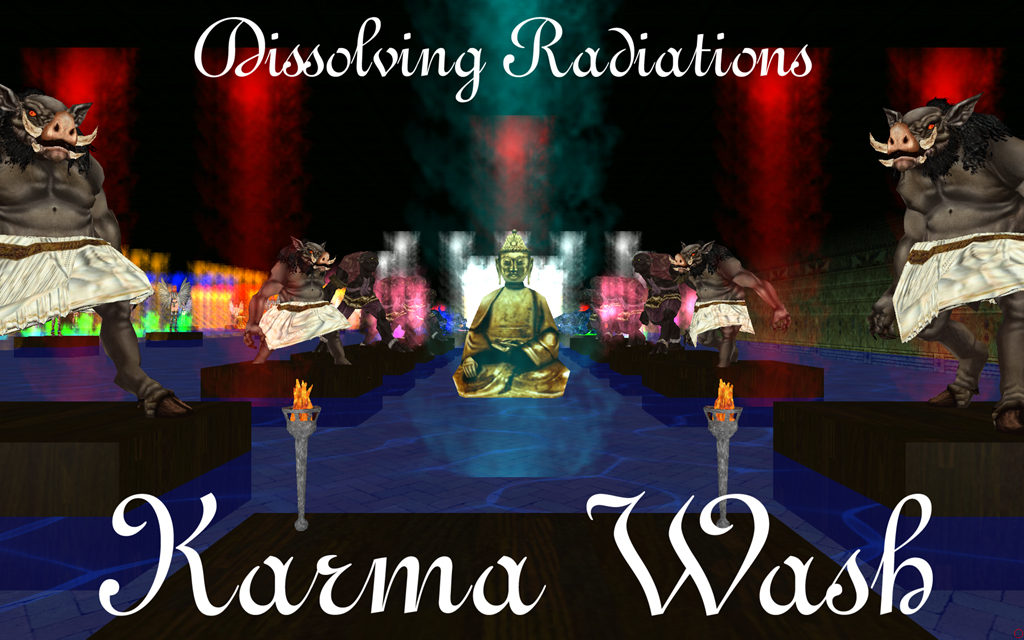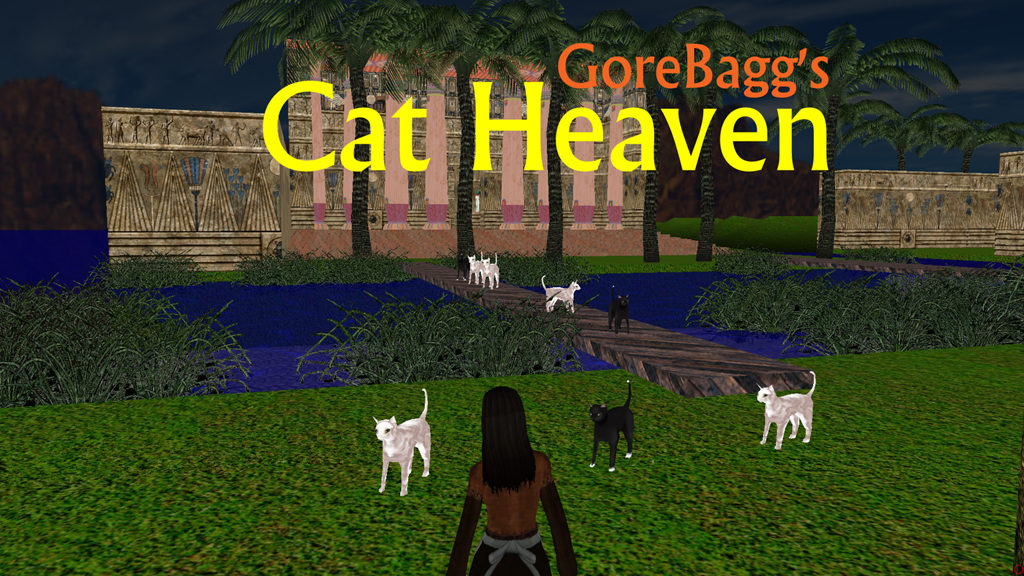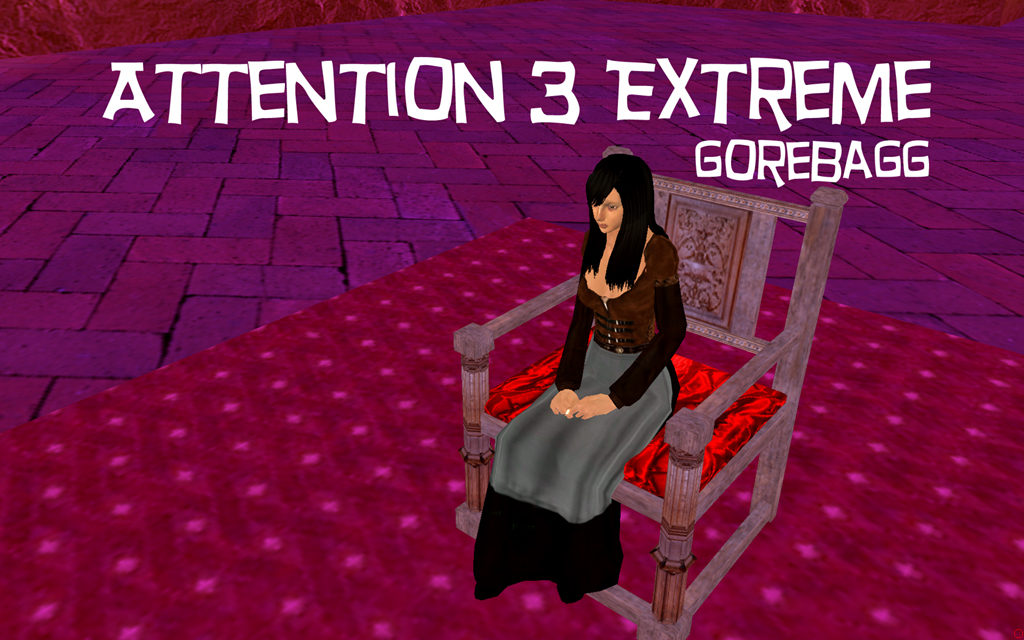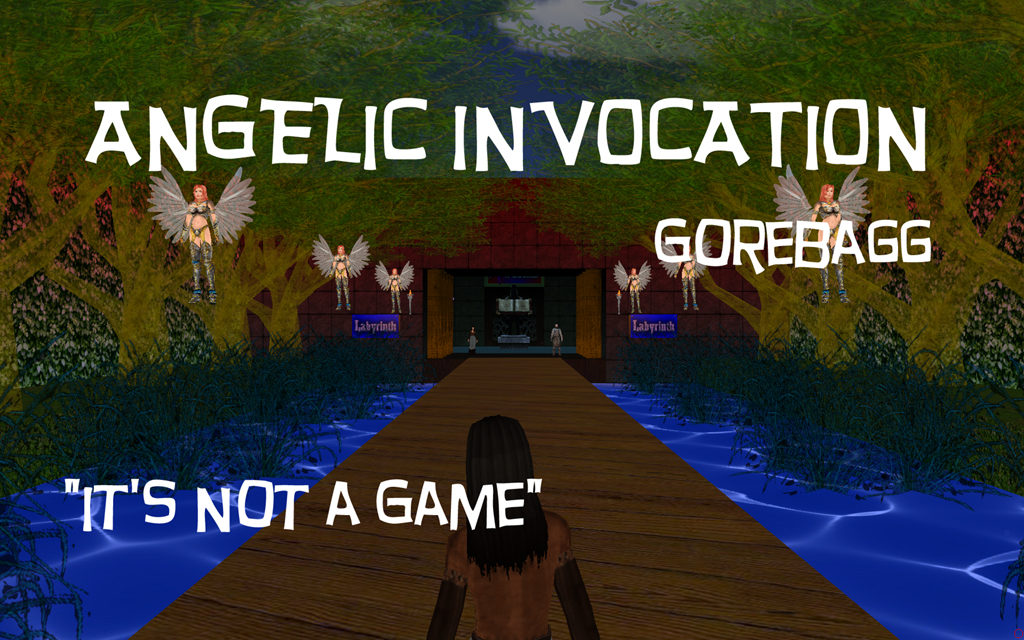Your total job is to make people aware of our Work. Period. How you do this is entirely up to you and to the luck of the draw which creates your specific place in the world.
One way to make people aware of the Work is to put them right into it, and one of the best ways to do this is to introduce them to the world of spiritual gaming.
Okay, let’s say that you have in your hands the world’s best, most amazing, astounding, incredible and fantastic video game and that playing this game offers a PORTAL into the spirit world, and you can prove it and you have thousands of testimonials testifying to that fact.
You have in your virtual hands the Perfect Spiritual Video Game. But there’s a problem. Nobody wants to even LOOK at it, let alone download it and play it and join a LIVE community of avid players and tell all their friends about it on twitter and facebook and instagram and all those other social media networks.
Yes, you have it right there in front of you, and nobody wants to play your stupid game. So what are ya gonna do? Where will you go? What will you do?
Frankly, my dear, no one gives a damn.
Pull out of your personal grief and focus on the real issue — are you making people aware of the Work and helping them to get into the stream? Well, you need a plan, and that starts with a Basic Awareness of a Basic Fact of Life:
You have to come to grips with the absolute certainty that if you don’t promote something, whether it’s a product or a service, it WILL fail, no matter how good the product or service might be.
The other Absolute Certainty is that things not directly in someone’s face will not provoke a click-through, and CTRs — the click-through rate of your landing page — is your main goal and your main way of measuring your success.
To achieve any measure of success, you need to HAVE A PLAN, and here’s one that I know for a fact WORKS:
SET A GOAL —
Not a bunch of goals, ONE goal, and make it a goal that you are absolutely sure you CAN reach from where you are right now, today. The goal you set defines where the road will take you — your PATH.
Let’s see what the options are right now… You’ll need to create a goal for sales, numbers of downloads, speed rate of downloads, conversion rate of the landing page and finally, the price for your videogame, whatever that might be, and there’s really only one choice that the marketplace makes for all makers of Indie games — $19.95.
I’m going to put a phone game out for .99 cents, and a few Godd™ Engine Orbs as well, but if you do the math, you’ll see that you will need exactly 280,000 clients to reach a goal of $50,000 profit for the game — something I wouldn’t even dream possible without social media, and I wouldn’t hold my breath for it even if you’re a masterful social media operator, because there’s a ton of talent and competition out there for those very same dollars, and those guys are tuned in — you’re probably not.
If you can’t hit the pulse of the market, your game will sit unbought and alone.
At very best, as an indie game producer, you’re going to get a 1% conversion rate, and that’s mighty slim for an Indie game producer to deal with. Actually, you’ll be lucky if your game gets any sales at all, being an Indie game and being totally retro, although in some circles, that’s a big plus. You’ll need to SET a DATE — goals are no good without limits. Set the goal for the next three months, the next quarter-year.
A conversion rate of .1% is mostly what you’ll end up with on any promotion, no matter how you knock yourself out, and laying out a lot of money won’t help the situation.
What you really need is to keep to your plan, and keep putting out video games until one clicks with the public, if ever.
The odds say that this will never happen, but like an old desert gold prospector or a digger on Oak Island or a gambler pulling the arm of a $1 dollar slot machine in Vegas, you just keep on trying. Mostly you lose, but you keep on trying.
Why keep on trying? Because NOT trying GUARANTEES failure, that’s why. And so you make misteaks, things don’t go write, and stuff doesn’t get done.
So you gather yourself up and start again. Why? Because giving up guarantees failure, and failure — in the case of Work on Self — is not an option.
So your goals could be set at first as follows:
- DIRECT SALES GOAL — Let’s say you’d like to make $50,000 in the first year of release of a game. This is your total in, minus your promotional expenses, which are going to be a lot higher than you’d hoped, but that is the price you pay for being an Indie and not taking a 9-to-5 job as a game programmer for a massively giant corporation.
- OTHER ASSOCIATED SALES — After publisher and distributor costs are met, you might make a few bucks more on the side in unexpected sources of income. This might be an additional $20,000 you make during the same year.
- TOTAL SALES — This is what you have to gross in order to net your goal.
Okay, now let’s see what “Direct Sales” actually amounts to:
- RETAIL PRICE — $19.95
- CONVERSION RATE GOAL — 1%
- DOWNLOADS GOAL — 200,000
- UNITS DOWNLOADED — 2,000
- DEADLINE — December 31, 2022
This is all malleable, entirely up to you, and you should set those goals with reasonable expectations that you could meet them, given your resources and time available for the project.
You might want to set quarterly goals instead of yearly, but it’s up to you — this exercise is designed to help you to KEEP YOUR GOALS IN SIGHT, keep your eyes on the prize.
Or is it “Keep your eyes on the preyes”???
Channels of Distribution
Several options for distribution of your indie video game are open to you, and most indies actually follow these pathways to success which is, elusive as it may be, always possible around the next corner, links um die Ecke.
- DIRECT SALES in your WEBSITE SHOPPING CART — This option will probably be the easiest for you to arrange. Getting your stuff on other people’s websites will be the real challenge, and one which you MUST meet and beat.
- RETAIL STORE SALES — This you will probably not be able to arrange — it’s for package stores, places like K-Mart and such.
- PORTAL SITES — A place like Steam will work for this angle.
- ONLINE DELIVERY SYSTEMS — We use several services, among which is Payloads.
- PUBLISHER’S CHANNELS — This doesn’t do a whole lot of good, but ya gotta try.
PORTALS are a good bet for indies — Each PORTAL has its own standards and set of specific requirements for games that they allow on their site.
Here are a few PORTALS you might be able to enlist in your campaign:
- BIG FISH GAMES —
- EA’S POGO —
- GAMEHOUSE —
- GAMEXTAZY —
- GAMEZONE —
- PLAYFIRST —
- REAL ARCADE —
- SHOCKWAVE —
- TRYGAMES —
- YAHOO GAMES —
Check out the top 10 bestselling games on each of these PORTAL sites to see how well or poorly your game matches the expectations of their clientele.
It’s probably going to fall far short, but you’ll learn eventually how to make your games more attractive, seductive and immersive, which IS the goal of ANY game on any level of existence including The Big One.
So the upshot is this: you’ll set up something like the following:
- OUR WEBSITE —
- MUMBO JUMBO —
- UNITED DEVELOPERS —
- TRI SYNERGY —
Those are possible RETAIL channels of distribution. We’ll also want to include other retail possibilities, such as:
- DREAMCATCHER —
- THE ADVENTURE COMPANY —
- CYLON INTERACTIVE —
- MERSCOM —
- MWR CONNECTED —
And a few publishers for possible non-exclusive deals:
- SHRAPNELGAMES —
- JOWOOD —
- MATRIX GAMES —
And naturally, we’ll spend the hundred bucks to put our new game on STEAM, which is the most obvious pathway of all for an indie game producer to take.
Have Something Worth Buying
Your product should be the highest quality possible to deliver — everything works, and it works perfectly. No bugs, no hangups, no issues with the game itself or the delivery system in which it arrives at your customer.
If your conversion rate is very low, the chances are that the quality of the product is not up to snuff — or it could be a lousy conversion page.
When you hear people complain, “This game is too addictive, I can’t put it down”, then that’s when you’ve hit the right combination.
It’s not always the product that turns people off — more often it’s the website or the demo that are lacking.
To create a COMMUNITY of hardcore players of your game, you’ll need to develop the game so players like to play it and will gladly share that experience with others.
Make People Aware of Your Game
If they’re not aware of it, they’ve already turned it down. That’s your guarantee of failure. You need to get your product out in people’s faces, and you need to find out how to do that, and fast, or your game company will go the way of the Titanic — directly to the bottom.
You have to find a way to guide the customer from wherever they happen to be to your website, and in particular to your sales or “landing” page where you offer the item for sale.
The second thing you need to do is to get your game listed on a number of download sites, and that might not be so easy. You need to do it, so find a way.
Target Niche Market Segments
Casual Players have different needs, habits and preferences than Hardcore Players, and a six-year-old player will definitely play differently and have profoundly different gaming tastes than a thirty-something.
Gen Z Players will play faster than Baby Boomers, and you can take that to the horses, and male and female players might play the same game, but their playing styles and personal goals will be very different across the sexes.
Japanese players will not be the same as German or Dutch or Norwegian or Puerto Rican players, I assure you, same as with the art and rare book market, cultures tend to vary.
So I hate to be the bearer of Bad News, but YOU are the one who has to determine the targets of your marketing campaign, not I, and you can’t find that on google. The answer to “who are my marketing targets?” HAS to be discovered by YOU, or you have to hire someone you trust to tell you the answer.
Do you trust me?
Thanks, and I trust you, but you shouldn’t trust me to tell you what you need to do. You need to do some real soul-searching to find those of like mind who will appreciate your incredible new game and recognize it as a game like no other, entirely unique, and totally wondrous to play.
You want to get your players to sell to other potential players, and that means you have to give them a COMMUNITY to love. Hey, love starts out as love for a community, that’s fine with me — it has to start somewhere, and it ALWAYS starts with something small.
The Four Seasons Landscape
There are four commonly agreed-upon basic components that create market flow — these are basically ways to organize your promotion by some sort of group organization.
Geographic
- Country
- State
- County
- City
- Village
- Hamlet
Demographics
- Age
- Gender
- Education
- Religion
- Occupation
- Income
- Family Size
Psychographics
- Social Class or Caste
- Lifestyle
- Personality
- Circle of Influence
Behavioral
- Casual-to-Heavy User
- Level of Game Addiction
- Attitude
- Service
- Loyalty
- Awareness
- Favorite Games
- Consciousness
- Desire to Awaken
Technicals
- Speed of Internet Connection
- Age and Condition of Computer
- Ability to use Computer
Now after you’ve selected your marketing segments of the population, you’re ready to decide on your marketing message, and you have to remember to KEEP IT SIMPLE.
Think and compose your ads as if you were designing bumper stickers. You have to say it all in 1/3 of a second or lose the opportunity to connect and to stay connected.
Positioning your message is a way of saying that you attempt to distinguish your product not only by itself but by its marketing package and promotion, which IS the brand.
If you POSITION yourself by offering the lowest delivery price for young strategy players, it will be a very different place than you’d be in if you were trying to sell a non-violent game about the life of Jesus to a devotedly religious crowd of true believers.
GoddGames aims to please board gamers with some of our games, adventure gamers with other titles, and casual players with yet another set of games — you can’t please everyone all at once.
If I were marketing multiplayer games, I’d be marketing challenging open world games to my crowd. That type of gamer doesn’t generally have a favorite genre, just a game where they can hang out with their friends and maybe show off their new hat or gun to get approval or admiration or envy.
This kind of player is usually a male in his twenties, higher than average income, and $30 for entertainment is not a lot to be asking of him. He can well afford it, as well as the incredible stuff he got from the dispensary this morning — his only expedition so far today.
This guy is on high-speed internet, has a gaming console and a whole set of controllers and headsets, and is well aware of all the other great games there are out there yet to play.
They speak fluent English and are very aware of Eastern cultures and space technology. They are well-connected and in touch with dozens or hundreds or thousands of followers on twitter and facebook, and they’re hungry for more.
Typical Marketing Strategies
- ADWORDS — Targeted directly to Board Games, Banner ads on Multiplayer Sites.
- MULTIPLAYER GAMING PLATFORMS —
- REVIEW SITES —
- COMMUNITY FORUMS —
- PRESS RELEASES —
- ARTICLE POSTINGS —
- PROMOSOFT PAD SERVICE —
- WRITE BLOGS —
- GET INTO PEOPLE’S BLOGS —
- ENLIST THE AID OF AN INFLUENCER —
- INDEPENDENT GAMES FESTIVAL —
Sure make an entry, why not? What will it hurt? You don’t try, you guarantee failure, so give it a try, enter your game in a contest. Will it win? Dream on. But do it anyway.
Get Them to Download the DEMO
You need to GET PEOPLE TO DOWNLOAD THE DEMO. Sorry for the all-caps, but it’s dreadfully important that you do just that.
If they download the demo, there’s a far better chance that they will buy, download, install and actually PLAY your new game.
That’s the first step, however tentative it may be. Your website’s main purpose is to get people to download the demo. That is your website’s purpose. That is your website’s purpose. That is your website’s purpose.
There, I think that got in. Sometimes you need some repetition to get some penetration past that heavy blockage in the human intellect. It’s just not cut out for duty in the higher dimensions, is it?
Your Indie Marketing Plan MUST include what you’re going to have to do to your website or at least your landing page to get people to DOWNLOAD YOUR DEMO.
It’s like selling jewelry. You’ll never sell something that the customer won’t try on, and you’ll almost always sell something they DID try on.
That’s a fact known to every sales person on the planet and as far as Algol 3, the inhabited planet of that particular star system.
Frankly, I never met a more enthusiastic gaming population than that on Algol 3, and I have to say that the food is at least the equal of a great Italian kitchen, only these guys mainly cook and serve strictly vegan.
Of course, that doesn’t include the cattle from which they occasionally extract valuable enzymes that sell really well on the interdimensional internet — you’ll find them listed in “great organic stuff” in the Guide to the Indeterminate, published by J. Rowdanglopf back in 3453 A.D. — oh, wait a minute…you guys don’t time-travel, do you?
Well, forget I mentioned it. I’m depending on your lousy memory. Hey, don’t make me take out that pen and flash it in your eyes again.
If your web page bounces, meaning they never click through once they’re on your site, then you really need to redesign your website, and fast — your customers are slipping through the cracks.
If your visitors leave without downloading something, you need to enhance your site. Don’t wait. You’re losing 100% of your customers.
The Other Reason your gaming website exists is to SELL THE GAME, to get the client to buy and download and install and play the game, and that takes skills, marketing skills, which you might or might not have.
I don’t have social media marketing skills, and I’m smart enough to know it. So I hire people who have those skills to do those jobs, and that’s why I’m using SOME help on fiverr.com — but I have to do other things as well, can’t depend on them to produce results — they may or they may not.
Your client has to be able to DOWNLOAD THE DEMO with a single click, and BUY THEGAME with a single click. Never more than one click to download the freebie or download the game that they bought.
If your gaming website does anything other than that, you’re not doing it right. Of course you want to give information, help, all that — but you have to keep your primary goal in sight — GET THE CLIENT TO DOWNLOAD THE DEMO or GET THE CLIENT TO BUY THE GAME.
It’s a singleness of purpose that will do the job — nothing less will make it happen.
Your website is up all the time on a server, well-maintained and intelligently protected. Okay, now you need to assure yourself that your website will accomplish the following:
- Gameplay Video that shows lots of action and tons of excitement.
- Provocative Screenshots updated every week during development.
- Player Forum establishing a good solid foundation of game community.
- Reliable Contact Form to keep the client in touch.
- Easy to find “DEMO” and “BUY” buttons.
- Be sure to list all Game Requirements & System Requirements
- Product Features should be specifically listed here.
- Game-Related Tips, Hints, Cheats & Codes should all be available by hyperlink.
You’ll want to polish up your site graphics, or hire someone on fiverr to do it for you. Don’t use javascript if at all possible. Keep the site easy to read and scan, lots of good flow and upthumb slipping and sliding — scroll effects should work in any cellphone.
Re-evaluate your rate of actual downloads, and see how far you have to go to meet your goals for the first quarter of the year from the release date — the first three months.
Readjust your expectations as necessary, swallow your disappointment and make another, much better, video game, and release that as you’re able.
The DEMO
Your DEMO is your salesperson, whose only goal is TO CLOSE THE DEAL, get the customer to buy the game and download it and play it and tell all their friends how great the game is and how much fun they had playing it and how incredibly addictive it is.
That’s the job of your DEMO. Did it do that? Okay, why not?
The DEMO needs to be short, sweet and to the point, clearly showing how much FUN it is, how IMMERSIVE it is and most importantly, how ADDICTIVE it is, meaning that they’ll want to play it endlessly, again and again and again, so the DEMO version of your game has to FOCUS on the good points of the game.
If the conversion rate of those who ran the DEMO is very low, you MUST re-do the DEMO, assuming that the game as a whole is good, but the DEMO sucked.
Does the DEMO have all the features of the complete game? Fewer units, fewer levels, fewer powers or weapons, compared to the full game?
Make sure to add “NAG” screens fairly frequently in the DEMO, to provoke the client into buying the full game.
If the DEMO doesn’t lead the client directly to the sales page on your website, make that happen, and fast. The Godd™ Engine does do that, and it does it very well and cleanly, while closing down the game at the same time — or not, as the game developer directs.
GUIDE the player to the buy point, don’t depend on it to just happen.
Re-Assessment
Know what the hell is going on with your game relative to the rest of the market. As you make modifications to your marketing plan — and you will — keep track of your data and where you are in the process, and keep the unknowns down to a single variable, as you’d handle any equation — simplify the form.
For instance, if you change the price, measure the effect, THEN change the promotion or the DEMO or the buy button, don’t do those things all at once.
Offer a money-back guarantee to see if that has any effect. Don’t worry, the law in most USA states is that you have to give that guarantee anyway, or it’s implied without expression, to quote one of my favorite Title 18 passages in the U.S. Federal Code.
Does putting a limitation on the DEMO help or hurt? Sometimes you have to let them have three levels of DEMO before they’ll make a move to touch that “BUY” button.
Do the sales increase if you offer an in-game tutorial, as you’ll find in Team Fortress 2, or a workshop like our ZOOM meetings? Do you have NAG screens or some sort of in-game reminder to buy the game?
Be aware of the fact that you’re flying an airplane, and you can’t take your attention off the wheel, and you MUST keep track of all your instruments, to know that your oil pressure is good, your ignition is good, your altimeter is functioning and your compass is on straight.
It’s really quite a juggling act, and not everyone is cut out for that sort of thing, which is why we have fiverr.com and other gig-work connections.
Building Relationships
It’s really all about connecting, hooking up, getting in contact and staying in contact, and whatever marketing plan you’ve decided on, you’re going to have to maintain the system.
That means taking the pulse constantly and consistently. It means dealing with customers, and handling problems, complaints and issues.
You want repeat customers and customers who will help you build a community of players, actually establishing a relationship with them, and serving that base of supporters with great gaming and great and responsive customer service.
You’ll need to set up FAQ lists, support databases and automated emails, unless you’ve got an enormous amount of time.
Is there an online chat room established for the game community? A specific forum? Will you blog or send out newsletters about updates, new games and other offers?
Refine the Plan
You’ll have to wing it as you’re able. You need to bail the boat, and that takes some skill, some knowledge and some handling of data that you might not have. Again, asking for help often is a good solution.
We’re available at all ZOOM meetings for questions — you are most welcome at our meetings, and you are cordially invited to ask any question you like.
I don’t guarantee an answer, but you can ask anything. Hey, I might not know. It’s true that I know everything, but not all at once.
See You At The Top!!!
gorby


